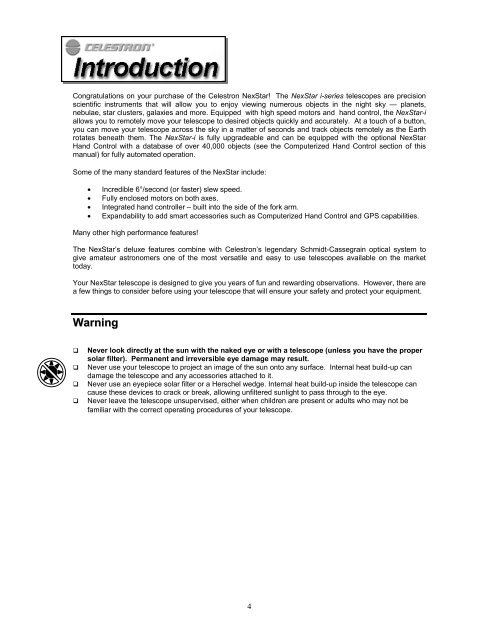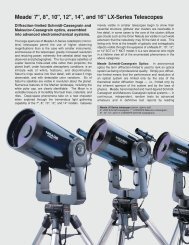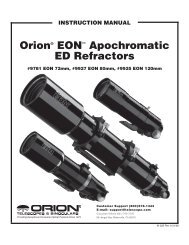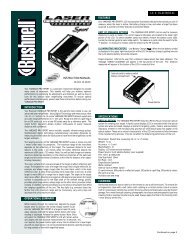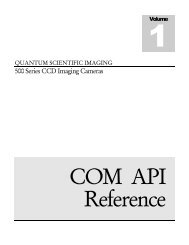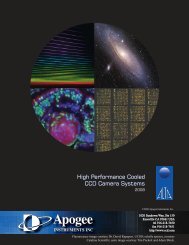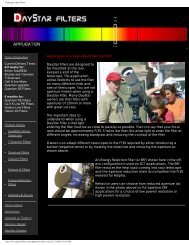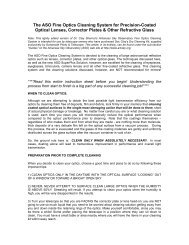INSTRUCTION MANUAL
INSTRUCTION MANUAL
INSTRUCTION MANUAL
Create successful ePaper yourself
Turn your PDF publications into a flip-book with our unique Google optimized e-Paper software.
Congratulations on your purchase of the Celestron NexStar! The NexStar i-series telescopes are precision<br />
scientific instruments that will allow you to enjoy viewing numerous objects in the night sky — planets,<br />
nebulae, star clusters, galaxies and more. Equipped with high speed motors and hand control, the NexStar-i<br />
allows you to remotely move your telescope to desired objects quickly and accurately. At a touch of a button,<br />
you can move your telescope across the sky in a matter of seconds and track objects remotely as the Earth<br />
rotates beneath them. The NexStar-i is fully upgradeable and can be equipped with the optional NexStar<br />
Hand Control with a database of over 40,000 objects (see the Computerized Hand Control section of this<br />
manual) for fully automated operation.<br />
Some of the many standard features of the NexStar include:<br />
• Incredible 6°/second (or faster) slew speed.<br />
• Fully enclosed motors on both axes.<br />
• Integrated hand controller – built into the side of the fork arm.<br />
• Expandability to add smart accessories such as Computerized Hand Control and GPS capabilities.<br />
Many other high performance features!<br />
The NexStar’s deluxe features combine with Celestron’s legendary Schmidt-Cassegrain optical system to<br />
give amateur astronomers one of the most versatile and easy to use telescopes available on the market<br />
today.<br />
Your NexStar telescope is designed to give you years of fun and rewarding observations. However, there are<br />
a few things to consider before using your telescope that will ensure your safety and protect your equipment.<br />
Warning<br />
Y Never look directly at the sun with the naked eye or with a telescope (unless you have the proper<br />
solar filter). Permanent and irreversible eye damage may result.<br />
Y Never use your telescope to project an image of the sun onto any surface. Internal heat build-up can<br />
damage the telescope and any accessories attached to it.<br />
Y Never use an eyepiece solar filter or a Herschel wedge. Internal heat build-up inside the telescope can<br />
cause these devices to crack or break, allowing unfiltered sunlight to pass through to the eye.<br />
Y Never leave the telescope unsupervised, either when children are present or adults who may not be<br />
familiar with the correct operating procedures of your telescope.<br />
4


